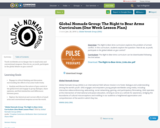
Youth worldwide are in danger due to small arms and conventional weapons. How do we, as youth, participate in the global debate on gun control?
- Subject:
- Arts and Humanities
- Social Science
- Material Type:
- Lesson Plan
- Date Added:
- 04/04/2014

Youth worldwide are in danger due to small arms and conventional weapons. How do we, as youth, participate in the global debate on gun control?
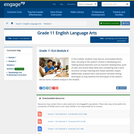
In this module, students read, discuss, and analyze literary texts, focusing on the authors’ choices in developing and relating textual elements such as character development, point of view, and central ideas while also considering how a text’s structure conveys meaning and creates aesthetic impact. Additionally, students learn and practice narrative writing techniques as they examine the techniques of the authors whose stories students analyze in the module.|
Find the rest of the EngageNY ELA resources at https://archive.org/details/engageny-ela-archive .

Unit Overview: The Writers on Writing Unit engages students in reading, analyzing, and creating literacy narratives, or stories about learning to read and write. The unit begins by asking students to view and read literacy narratives, and to analyze author’s literacy narratives through annotation, discussion, and writing a formal analysis essay. As students go through the narratives, they are asked to analyze author technique and purpose, paying close attention to style, syntax, and organization in preparation for writing their own authentic literacy narratives and ultimately creating digital storytelling projects about those narratives. By the end of this unit, students will have composed analysis writing, creative nonfiction, and multimedia stories. They will have had the ability to select certain reading assignments, to work in groups and with partners to brainstorm, edit, and revise, and they will have had guided writing lessons on composing strong sentences. Days 3 to 5 Overview: These plans are for Days 3 to 5 of the Writers on Writing Unit. On day 3, students listen to podcasts about different perspectives on struggling to read. They then complete a pre-assessment, reading and analyzing a literacy narrative with guided style analysis notes. Students will then review the pre-assessment activity in preparation for reading their own selections of professional literacy narratives on day 2. The lesson will culminate with students writing an analysis of a professional literacy narrative. Image source: "Idea" from Pxhere.com
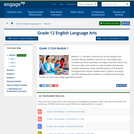
Module 12.1 includes a shared focus on text analysis and narrative writing. Students read, discuss, and analyze two nonfiction personal narratives, focusing on how the authors use structure, style, and content to craft narratives that develop complex experiences, ideas, and descriptions of individuals. Throughout the module, students learn, practice, and apply narrative writing skills to produce a complete personal essay suitable for use in the college application process.
Find the rest of the EngageNY ELA resources at https://archive.org/details/engageny-ela-archive .
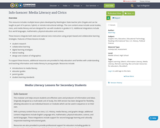
This resource includes multiple lesson plans developed by Washington State teacher John Zingale and can be taught as part of in-person, hybrid, or remote instructional settings. The core content areas include social studies, civics, and media literacy and are designed for use with students in grades 6-12. Additional integrations include ELA, world languages, mathematics, physical education and science. These lessons integrate both state and national civics instruction using project-based and collaborative learning strategies. Features of these lessons include:student researchcollaborative learningdigital learning strategieslateral readingdesign and creation of infographicsTo support these lessons, additional resources are provided to help educators and families with understanding and teaching information and media literacy to young people. Resources include:introductions to media literacyeducator guidesparent guidesstudent learning standards
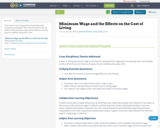
This resource is an integrated unit spanning math, economics and English. This unit is focused on the the subject of the minimum wage and the themes of equity, financial stability and quality of life.
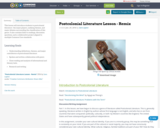
This lesson will introduce students to postcolonial literature--the major players, unifying themes, and major debates surrounding the classification of this genre. It also contains links to readings, discussion questions, and a collaborative project aligned to multiple Common Core standards.
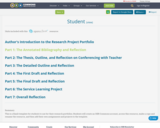
This is a blank template for students to use for their research portfolios. Students will create an OER Commons account, access this resource, make a copy and rename the resource, and then add their own assignments and projects to the template.
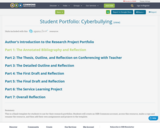
This is a blank template for students to use for their research portfolios. Students will create an OER Commons account, access this resource, make a copy and rename the resource, and then add their own assignments and projects to the template.

History has given us remarkable examples of cross-cultural solidarity within the context of social justice movements. These working relationships are the legacy on which today’s age of activism stands. By examining this historical/contemporary phenomenon through a diverse range of texts and media, students will hone analytical, writing, and social-emotional skills with an eye toward their collective role as a conscientious, global citizenry.

When students are assigned an argument paper of 7-9 pages for Composition II, they often struggle to gather enough research material to fill the required pages. This lesson is intended to help them expand their topics in order to write a good research question as well as to gather the appropriate amount of information.
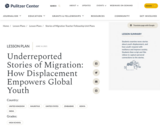
As part of this seven-lesson unit, which is designed to be facilitated over 10-15 days, students examine several underreported global news stories of human interest that focus upon the displacement of youth worldwide. They also evaluate how this displacement fosters both individual and collective empowerment for positive social change. Students process their analysis through the creation of original videos and scripts that capture personal connections they have made to themes in the articles they explored.

This is a Google doc with multiple steps and resources to walk students through the writing process for an Evaluation Essay

This Google hyperdoc walks students through the writing process for a literacy narrative in a series of steps. This can be used in a high school or college ELA course that requires personal narrative.